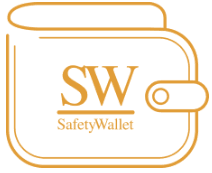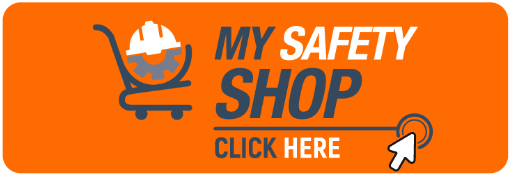Emergency Preparedness in the Wood and Upholstery Industry

Be Prepared, Stay Safe: Emergency Preparedness in the Wood and Upholstery Industry in South Africa
The wood and upholstery industry in South Africa is a cornerstone of the economy, providing essential products and services. However, ensuring the safety of employees in the face of emergencies is paramount. This is where emergency preparedness becomes crucial. By proactively planning and preparing for unexpected events, businesses can minimise risks and ensure a coordinated response during emergencies.
The Importance of Emergency Preparedness
Prioritising emergency preparedness is essential for several reasons:
- Saving Lives: A well-defined emergency plan can significantly reduce the risk of serious injuries or fatalities during emergencies.
- Minimising Damage: Planned evacuation procedures and rapid response protocols can help mitigate property damage and costly business disruptions.
- Enhanced Public Image: Demonstrating a commitment to safety and swift action during emergencies fosters trust and confidence among employees, clients, and stakeholders.
- Legal Compliance: Many regulations in South Africa outline specific requirements for emergency preparedness in workplaces.
Complete the form below to find out how to qualify for your Free Health and Safety Audit today.
Understanding Legal Obligations
The Occupational Health and Safety Act (OHSA) 85 of 1993 places a legal responsibility on employers to ensure the health and safety of their workforce. This includes:
- Developing and implementing emergency evacuation plans.
- Providing adequate training on emergency procedures to all employees.
- Maintaining fire alarms and other safety equipment in proper working order.
- Conducting regular fire drills and evacuation exercises.
Emergency Evacuation Procedures: A Cornerstone of Preparedness
Effective evacuation procedures are a foundational element of emergency preparedness. Here's a breakdown of key steps:
- Emergency Evacuation Plans: Every organisation in the wood and upholstery industry should have a comprehensive emergency evacuation plan. This plan should be tailored to the specific building layout, potential hazards, and occupant needs.
- Emergency Management Committee: This committee is responsible for developing evacuation plans for each department or floor.
- Employee Training: Regular training ensures all employees understand the evacuation plan, their designated roles, and the location of emergency exits and fire extinguishers.
- Fire Drills and Exercises: Regularly conducting fire drills and evacuation exercises familiarises everyone with the plan, helping to minimise panic and ensure a smooth evacuation during a real emergency.
- Floor Wardens: Appoint and train floor wardens responsible for leading evacuation efforts on their designated floors.
- Evacuation Teams: Establish dedicated evacuation teams responsible for overseeing the safe evacuation of all occupants and visitors.
- First Aid Teams: Ensure readily available first aid teams trained to respond to injuries in the aftermath of an emergency.
- Fire Fighting Teams: In some cases, depending on the size and complexity of the building, trained firefighting teams may be necessary to take initial action to contain small fires. This decision should be made in consultation with fire safety professionals.
Emergency Preparedness Beyond Evacuation
While evacuation is a core element, emergency preparedness encompasses more:
- Emergency Communication: Establish clear communication protocols to ensure timely notification of emergencies and efficient information dissemination during a crisis.
- Emergency Kit Supplies: Maintain a well-stocked emergency kit containing essential supplies like first-aid kits, non-perishable food, and water for protracted emergencies.
- Guest and Client Communication: Develop strategies for keeping guests and clients informed during emergencies and ensuring their safety is prioritised.
- Security Measures: Implement security measures to protect the building and occupants during emergencies and prevent unauthorised access.
- Regular Updates and Reviews: Emergency plans should be regularly reviewed and updated to reflect changes in building layout, occupancy, or regulations.
Benefits of Compliance
Implementing comprehensive emergency preparedness measures offers numerous benefits:
- Enhanced Worker Safety: Ensuring that employees are well-prepared for emergencies reduces the risk of injuries and fatalities.
- Legal Protection: Compliance with OHSA and other relevant regulations protects businesses from legal penalties and potential lawsuits.
- Improved Productivity: A safe work environment boosts employee morale and productivity, as workers are less likely to be absent due to injuries or illnesses.
- Cost Savings: Preventing accidents and injuries reduces costs associated with medical expenses, workers' compensation claims, and equipment damage.
- Reputation Management: Demonstrating a commitment to health and safety enhances a company's reputation, making it more attractive to clients, partners, and potential employees.
Consequences of Non-Compliance
Failing to implement proper emergency preparedness measures and comply with regulations can have severe consequences:
- Legal Penalties: Non-compliance can result in hefty fines, legal action, and even the closure of business operations by regulatory authorities.
- Increased Accidents and Injuries: Without proper preparedness, hazards remain unidentified and unmitigated, leading to a higher incidence of workplace accidents and injuries.
- Financial Losses: Accidents and injuries can lead to significant financial losses due to medical expenses, compensation claims, and production downtime.
- Reputational Damage: A poor safety record can tarnish a company's reputation, leading to a loss of business and difficulty in attracting skilled workers.
- Employee Morale: A lack of commitment to safety can result in low employee morale, increased absenteeism, and high staff turnover.
Any questions? Speak to one of our Experts
Common Fails and Hurdles
Despite the importance of emergency preparedness, many businesses in the wood and upholstery industry face challenges in implementing effective safety measures:
- Lack of Awareness: Some employers may not fully understand the legal requirements and the importance of emergency preparedness.
- Resource Constraints: Small businesses may struggle to allocate sufficient resources for developing and implementing emergency plans.
- Inadequate Training: Without proper training, employees may not be equipped to respond effectively during emergencies.
- Resistance to Change: Implementing new safety measures can be met with resistance from employees who are accustomed to existing practices.
- Ineffective Communication: Poor communication between management and employees can hinder the effectiveness of emergency preparedness measures.
Partnering with MAKROSAFE, an Authorised Dealership of SafetyWallet
Developing and implementing a comprehensive emergency preparedness plan can seem daunting. This is where partnering with a reputable health and safety service provider like MAKROSAFE, an authorised dealership of SafetyWallet, offers significant benefits:
- Emergency Preparedness Expertise: MAKROSAFE possesses extensive knowledge of emergency preparedness best practices specific to the wood and upholstery industry.
- Evacuation Plan Development: They can assist you in developing an evacuation plan tailored to your specific building layout, occupancy, and potential hazards.
- Training and Drills: MAKROSAFE provides training programs for employees on emergency procedures and conducts realistic evacuation drills to ensure preparedness.
- Compliance Support: They can help you ensure your emergency preparedness measures comply with all relevant health and safety regulations.
SafetyWallet: Building a Culture of Preparedness
SafetyWallet, the leading health and safety company in South Africa, offers innovative tools and resources that complement emergency preparedness initiatives:
- SafetyWallet's Online Emergency Plan Portal: This user-friendly online platform streamlines the development, communication, and management of your organisation's emergency evacuation plan.
- Interactive Health and Safety Training Modules: SafetyWallet provides engaging training modules that train employees on various emergency procedures, making the learning process more interactive and effective.
- Safety Management Software: Their software integrates seamlessly with your emergency preparedness plans, facilitating incident reporting, risk assessments, and ongoing compliance monitoring.
The MAKROSAFE and SafetyWallet Advantage: A Powerful Partnership
By partnering with MAKROSAFE, an authorised dealership of SafetyWallet, you gain access to a comprehensive suite of services designed to elevate your emergency preparedness:
- Combined Expertise: Leverage the combined expertise of MAKROSAFE's industry knowledge and SafetyWallet's innovative health and safety solutions.
- Customised Solutions: Developed plans and procedures tailored specifically to the unique needs and potential hazards of your wood and upholstery business.
- Technology-Driven Approach: Utilise SafetyWallet's online platform and software to streamline emergency preparedness efforts and ensure long-term compliance.
- Ongoing Support: MAKROSAFE provides ongoing support to ensure your emergency preparedness program remains effective and adaptable to changing circumstances.
Investing in a well-defined emergency preparedness plan is an investment in the safety and well-being of your employees, clients, and stakeholders. Partnering with MAKROSAFE and SafetyWallet empowers you to build a culture of preparedness, ensuring a confident and coordinated response to any emergency situation. Contact MAKROSAFE today and take a proactive step towards a safer workplace for your organisation.
Any questions? Kindly leave your details for one of our Expert Consultants to give you a no-obligation Call.
Partnering with MAKROSAFE, an authorised dealership of SafetyWallet, empowers you to conduct effective health and safety compliance audits and build a robust safety culture within your wood and upholstery business. Schedule your complimentary consultation today to discuss your specific needs and discover how we can help you achieve operational excellence while prioritising the well-being of your workforce. Partnering with OHS Online and the Triple P HSMS, MAKROSAFE offers a comprehensive suite of services to assist employers in creating a safe and compliant work environment for any industry.
As a subscriber of SafetyWallet, you're entitled to a 25% discount on our health and safety courses. The value of safety cannot be overstated, and we're committed to supporting institutions in fostering a secure environment. Take advantage of your SafetyWallet subscription and enhance safety standards within your institution. Our courses are also available for purchase on My Safety Shop, ensuring easy access to the training you need.
MAKROSAFE, as a proud SafetyWallet Authorised Dealership of SafetyWallet, offers a free consultation to assess your current training needs and develop a customised training plan. Contact us today and let's build a brighter, safer future for the South African Wood and Upholstery Industry, together. Click on the image below to find a SafetyWallet Solution that suits your business (Branch/Site specific) and get the 22 benefits that includes FREE Health and Safety E-Learning for all staff along with the subscription:
To find out what other Additional Services we offer, please click on the picture below:
SAFETYWALLET In Co-operation with MAKROSAFE and MY SAFETY SHOP





